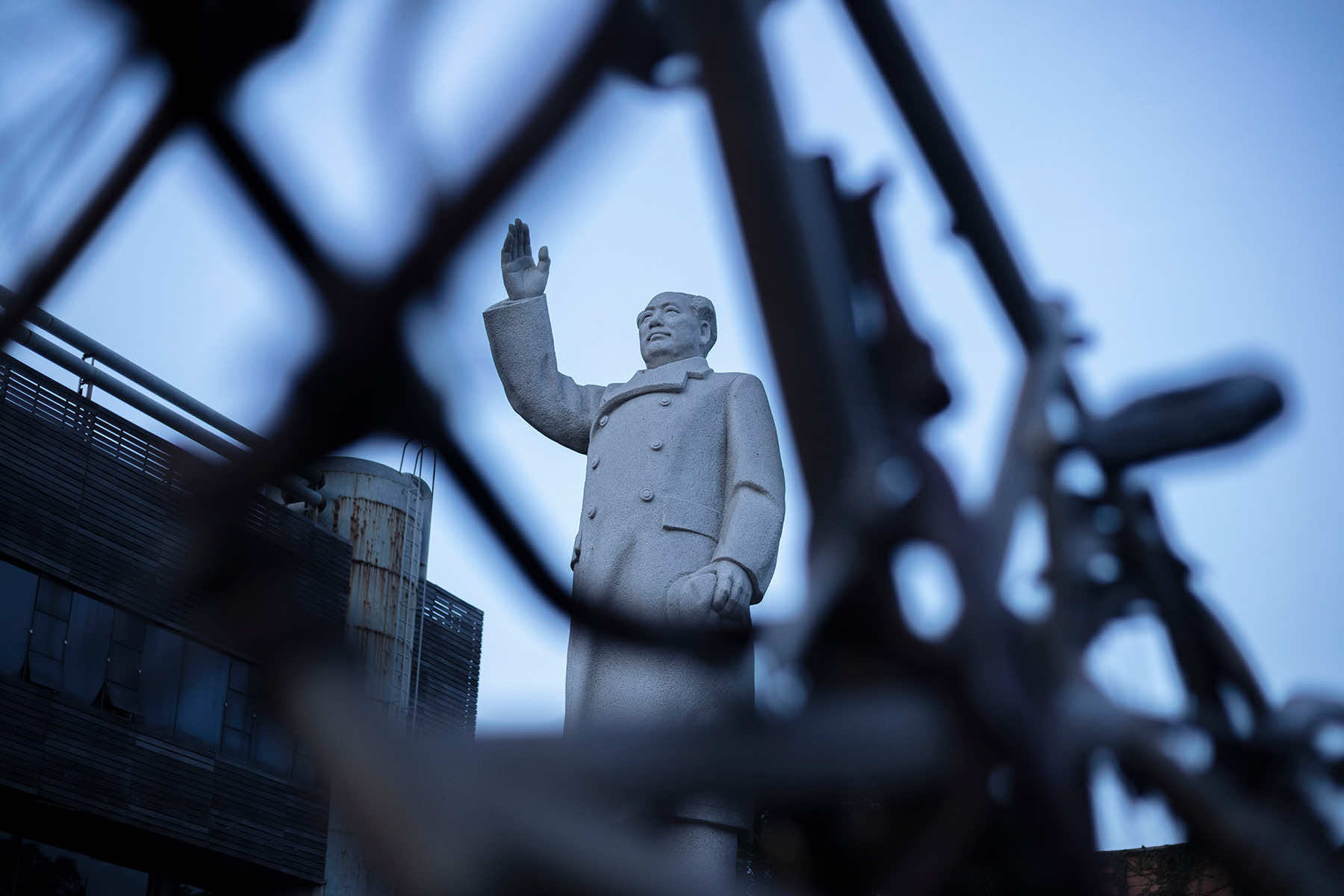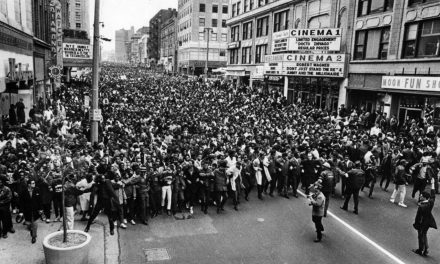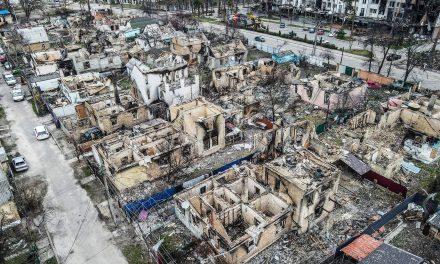
Just a year after the establishment of the People’s Republic of China (PRC), Chairman Mao Zedong made a pivotal decision in October 1950 that would reshape the landscape of East Asia in the 20th century, and set the stage for decades of Sino-American rivalry.
Mao initially planned to invade Taiwan to reunify China after its civil war. However, he was forced to shift his focus. North Korea had invaded South Korea, with the support and approval of the Soviet Union. After a stunning initial success, North Korea was nearly vanquished by UN troops led by the United States.
Fearing American forces near China’s border and under growing Soviet pressure, Mao decided to intervene in the Korean War. Despite numerous internal challenges, Mao approved deploying the “Chinese People’s Volunteers” (CPV) to Korea.
The intervention prevented the collapse of Kim Il-sung’s North Korean regime, but ultimately did not fulfill Beijing’s broader strategic aims.
The origins of the Korean War can be traced back to the end of World War II, which left the Korean Peninsula divided into two ideologically opposed entities. The Soviet Union supported the Communist regime in the North under Kim Il-sung, while the United States backed the anti-Communist government in the South led by Syngman Rhee.
Tensions escalated as both regimes aspired to unify Korea under their respective systems, leading to frequent border skirmishes even before the war officially began.
The North Korean invasion initially caught American officials by surprise. The rapid advance of North Korean troops forced the United States to intercede under the banner of the United Nations to support South Korea.
The war originally aimed to repel the Communist forces from the South, but the strategy quickly turned to an offensive operation intending to liberate North Korea from Communist control.
Following the 1949 revolution, the nascent Chinese Communist regime was beset with many challenges. In the immediate aftermath of its revolution, the Chinese Communist Party (CCP) faced the massive task of consolidating power and stabilizing a war-torn nation.
The CCP had to establish a new political order, rebuild an economy devastated by years of civil war and foreign invasion, and unify a country fragmented by regional, political, and social divisions.
Mao’s government prioritized land reforms, which aimed to redistribute property from landlords to peasants, thereby gaining the support of the rural population. Efforts were concurrently made to revitalize industry and infrastructure, which had suffered extensive damage during prolonged conflicts.
In the early 1950s, Western scholars, influenced by the Cold War dynamics, largely interpreted China’s intervention in Korea as part of a monolithic Communist expansion orchestrated by Moscow.
The Sino-Soviet alliance, formalized in February 1950, was a strategic move for Beijing, aligning with Moscow to counter what it believed was American Imperialism. The alliance was crucial for China, providing military and economic support, but it also meant that Beijing’s decisions were viewed through the lens of its relationship with the Soviet Union.
That perspective believed Beijing and Pyongyang were mere pawns in a global Communist plot. However, the interpretation overlooked the complex and autonomous decision-making processes within the Chinese Communist Party (CCP). Although Moscow’s influence was significant, Beijing maintained considerable autonomy in its decision-making process.
The Korean conflict was seen as a test of the PRC’s revolutionary resolve and an opportunity to assert China’s influence in the region. The strategic calculation was reinforced by the belief that the United States posed a direct threat to China’s national security, especially with UN forces moving towards the Chinese border.
The sense of insecurity was exacerbated by the reality of internal vulnerabilities and its perception of external threats. Mao and his comrades were acutely aware of the fragility of their newly established regime and the potential for foreign interference to destabilize their political authority.
As a result, China made several efforts to avoid direct military confrontation. Before sending troops, Beijing tried to resolve the conflict through diplomatic channels, warning the United States against crossing the 38th parallel. The warnings, however, were ignored, leading to a series of escalations that resulted in China’s intervention.
The failure of diplomatic efforts can be attributed to multiple factors, including miscommunications, miscalculations, and the rigid Cold War mentality that dominated American and Chinese policies. The United States underestimated China’s resolve and continued its advance, prompting a response that Beijing deemed necessary to protect its national interests.
The military situation on the ground in Korea played a crucial role in shaping Beijing’s decision-making process. The successful amphibious landing at Inchon by General Douglas MacArthur’s forces marked a turning point in the war, pushing North Korean troops back towards the Yalu River, which formed the border between North Korea and China.
The presence of hostile UN forces so close to its borders alarmed Beijing, which feared that the conflict could spill over into Chinese territory. Additionally, Mao and his military advisers were concerned about the potential for UN forces to use North Korea as a staging ground for future operations against China. The considerations made it imperative for Beijing to act decisively to prevent an unfavorable shift in the regional balance of power.
The Korean War soon became a war of attrition, with neither side able to secure a decisive victory. The conflict saw some of the most intense and grueling fighting of the Cold War, with significant casualties on both sides. The Chinese troops, despite being poorly equipped compared to their American counterparts, demonstrated formidable resilience and tactical ingenuity.
The human and economic costs of the Korean War for China were immense. Chinese forces suffered casualties estimated from hundreds of thousands to over a million soldiers killed, wounded, or missing. The war also placed a substantial financial burden on the nascent Chinese state, which was already struggling with economic reconstruction and development.
Despite the costs, the Chinese leadership viewed the intervention as a necessary sacrifice to secure their revolution and protect national sovereignty. The war also provided valuable military experience for the People’s Liberation Army (PLA) and contributed to the consolidation of Mao’s authority within the CCP.
The perceived success of Chinese forces in standing up to the United States bolstered national pride and reinforced the legitimacy of the Communist regime.
Negotiations for an armistice began as early as July 1951 but dragged on for two more years. Finally, an armistice was signed on July 27, 1953, establishing the Korean Demilitarized Zone (DMZ) along the 38th parallel, which remains one of the most fortified borders in the world today.
The Korean War also left an indelible mark on Sino-American relations. It was the first major conflict where the two superpowers directly clashed, setting the tone for future Cold War confrontations. The war significantly boosted China’s military and political standing, proving its ability to challenge American power and influence in Asia.
For the United States, the war underscored the threat of Communist expansion and reinforced its commitment to containing Communism around the globe. A lesson that would be tragically and improperly applied years later to the situation in Vietnam.
In China, the war is remembered as the “War to Resist U.S. Aggression and Aid Korea,” symbolizing national solidarity against a powerful adversary. The narrative is integral to China’s historical consciousness and continues to influence its foreign policy, particularly in its approach to U.S.-China relations.
The Korean War’s memory is also kept alive through commemorations and memorials, reflecting its significance in China’s national history. For instance, a Memorial Hall was reopened to mark the 70th anniversary of China’s participation, highlighting the continued relevance of the conflict in Chinese historical discourse.
In contrast, the Korean War is often referred to as the “Forgotten War” in the United States, overshadowed by World War II and the Vietnam War.
- Exploring Korea: Stories from Milwaukee to the DMZ and across a divided peninsula
- A pawn of history: How the Great Power struggle to control Korea set the stage for its civil war
- Names for Korea: The evolution of English words used for its identity from Gojoseon to Daehan Minguk
- SeonJoo So Oh: Living her dream of creating a "folded paper" bridge between Milwaukee and Korean culture
- A Cultural Bridge: Why Milwaukee needs to invest in a Museum that celebrates Korean art and history
- Korean diplomat joins Milwaukee's Korean American community in celebration of 79th Liberation Day
- John T. Chisholm: Standing guard along the volatile Korean DMZ at the end of the Cold War
- Most Dangerous Game: The golf course where U.S. soldiers play surrounded by North Korean snipers
- Triumph and Tragedy: How the 1988 Seoul Olympics became a battleground for Cold War politics
- Dan Odya: The challenges of serving at the Korean Demilitarized Zone during the Vietnam War
- The Korean Demilitarized Zone: A border between peace and war that also cuts across hearts and history
- The Korean DMZ Conflict: A forgotten "Second Chapter" of America's "Forgotten War"
- Dick Cavalco: A life shaped by service but also silence for 65 years about the Korean War
- Overshadowed by conflict: Why the Korean War still struggles for recognition and remembrance
- Wisconsin's Korean War Memorial stands as a timeless tribute to a generation of "forgotten" veterans
- Glenn Dohrmann: The extraordinary journey from an orphaned farm boy to a highly decorated hero
- The fight for Hill 266: Glenn Dohrmann recalls one of the Korean War's most fierce battles
- Frozen in time: Rare photos from a side of the Korean War that most families in Milwaukee never saw
- Jessica Boling: The emotional journey from an American adoption to reclaiming her Korean identity
- A deportation story: When South Korea was forced to confront its adoption industry's history of abuse
- South Korea faces severe population decline amid growing burdens on marriage and parenthood
- Emma Daisy Gertel: Why finding comfort with the "in-between space" as a Korean adoptee is a superpower
- The Soul of Seoul: A photographic look at the dynamic streets and urban layers of a megacity
- The Creation of Hangul: A linguistic masterpiece designed by King Sejong to increase Korean literacy
- Rick Wood: Veteran Milwaukee photojournalist reflects on his rare trip to reclusive North Korea
- Dynastic Rule: Personality cult of Kim Jong Un expands as North Koreans wear his pins to show total loyalty
- South Korea formalizes nuclear deterrent strategy with U.S. as North Korea aims to boost atomic arsenal
- Tea with Jin: A rare conversation with a North Korean defector living a happier life in Seoul
- Journalism and Statecraft: Why it is complicated for foreign press to interview a North Korean defector
- Inside North Korea’s Isolation: A decade of images show rare views of life around Pyongyang
- Karyn Althoff Roelke: How Honor Flights remind Korean War veterans that they are not forgotten
- Letters from North Korea: How Milwaukee County Historical Society preserves stories from war veterans
- A Cold War Secret: Graves discovered of Russian pilots who flew MiG jets for North Korea during Korean War
- Heechang Kang: How a Korean American pastor balances tradition and integration at church
- Faith and Heritage: A Pew Research Center's perspective on Korean American Christians in Milwaukee
- Landmark legal verdict by South Korea's top court opens the door to some rights for same-sex couples
- Kenny Yoo: How the adversities of dyslexia and the war in Afghanistan fueled his success as a photojournalist
- Walking between two worlds: The complex dynamics of code-switching among Korean Americans
- A look back at Kamala Harris in South Korea as U.S. looks ahead to more provocations by North Korea
- Jason S. Yi: Feeling at peace with the duality of being both an American and a Korean in Milwaukee
- The Zainichi experience: Second season of “Pachinko” examines the hardships of ethnic Koreans in Japan
- Shadows of History: South Korea's lingering struggle for justice over "Comfort Women"
- Christopher Michael Doll: An unexpected life in South Korea and its cross-cultural intersections
- Korea in 1895: How UW-Milwaukee's AGSL protects the historic treasures of Kim Jeong-ho and George C. Foulk
- "Ink. Brush. Paper." Exhibit: Korean Sumukhwa art highlights women’s empowerment in Milwaukee
- Christopher Wing: The cultural bonds between Milwaukee and Changwon built by brewing beer
- Halloween Crowd Crush: A solemn remembrance of the Itaewon tragedy after two years of mourning
- Forgotten Victims: How panic and paranoia led to a massacre of refugees at the No Gun Ri Bridge
- Kyoung Ae Cho: How embracing Korean heritage and uniting cultures started with her own name
- Complexities of Identity: When being from North Korea does not mean being North Korean
- A fragile peace: Tensions simmer at DMZ as North Korean soldiers cross into the South multiple times
- Byung-Il Choi: A lifelong dedication to medicine began with the kindness of U.S. soldiers to a child of war
- Restoring Harmony: South Korea's long search to reclaim its identity from Japanese occupation
- Sado gold mine gains UNESCO status after Tokyo pledges to exhibit WWII trauma of Korean laborers
- The Heartbeat of K-Pop: How Tina Melk's passion for Korean music inspired a utopia for others to share
- K-pop Revolution: The Korean cultural phenomenon that captivated a growing audience in Milwaukee
- Artifacts from BTS and LE SSERAFIM featured at Grammy Museum exhibit put K-pop fashion in the spotlight
- Hyunjoo Han: The unconventional path from a Korean village to Milwaukee’s multicultural landscape
- The Battle of Restraint: How nuclear weapons almost redefined warfare on the Korean peninsula
- Rejection of peace: Why North Korea's increasing hostility to the South was inevitable
- WonWoo Chung: Navigating life, faith, and identity between cultures in Milwaukee and Seoul
- Korean Landmarks: A visual tour of heritage sites from the Silla and Joseon Dynasties
- South Korea’s Digital Nomad Visa offers a global gateway for Milwaukee’s young professionals
- Forgotten Gando: Why the autonomous Korean territory within China remains a footnote in history
- A game of maps: How China prepared to steal Korean history to prevent reunification
- From Taiwan to Korea: When Mao Zedong shifted China’s priority amid Soviet and American pressures
- Hoyoon Min: Putting his future on hold in Milwaukee to serve in his homeland's military
- A long journey home: Robert P. Raess laid to rest in Wisconsin after being MIA in Korean War for 70 years
- Existential threats: A cost of living in Seoul comes with being in range of North Korea's artillery
- Jinseon Kim: A Seoulite's creative adventure recording the city’s legacy and allure through art
- A subway journey: Exploring Euljiro in illustrations and by foot on Line 2 with artist Jinseon Kim
- Seoul Searching: Revisiting the first film to explore the experiences of Korean adoptees and diaspora















